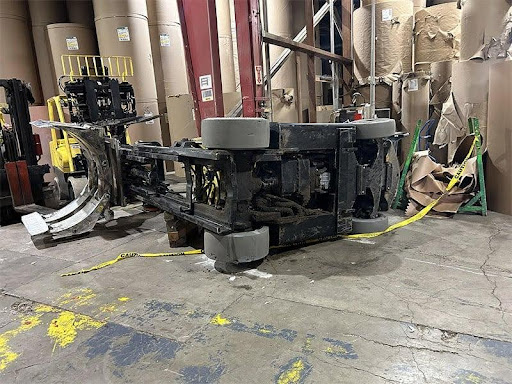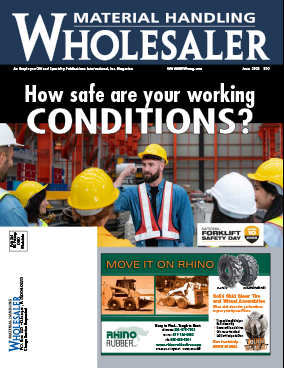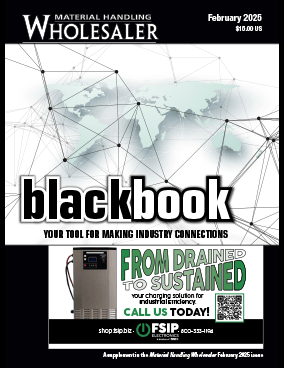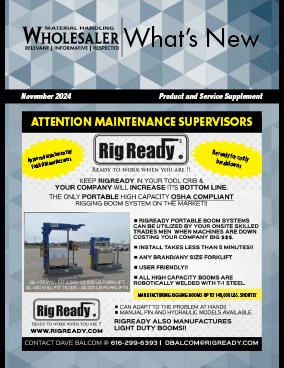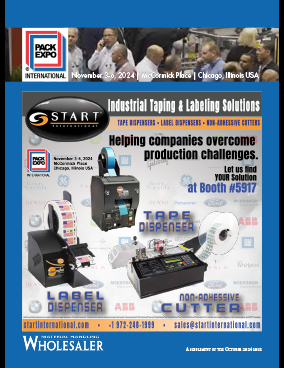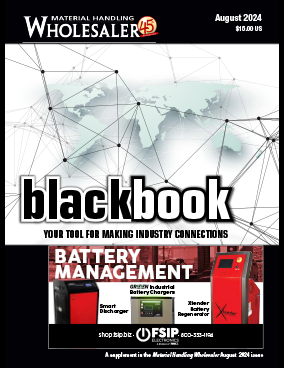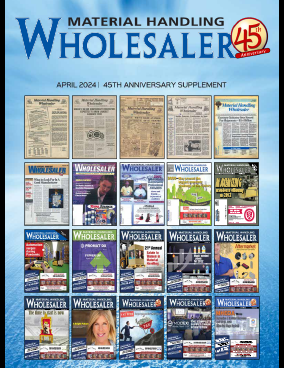Just as they say “when mama ain’t happy, nobody’s happy,” when the warehouse isn’t humming, nobody’s happy, from employees to customers to owners. But making a warehouse run smoothly and efficiently is achievable and worthwhile, saving money, time and accidents.
“A safety program is an investment a company needs to make,” said Kari Heid, national outside sales representative at American Warehouse Systems. From securing materials in storage to protecting employees from falling objects to repairing damaged equipment including racking, to forklift and pedestrian traffic, Heid recommends being preventive and proactive. “Companies have had to learn how to be efficient to maintain tighter budgets and learn where they are wasting time and money. A few simple steps toward a safer warehouse could save thousands in worker injury claims.
“Work with a material handling company to determine the correct size and capacity of warehouse equipment,” Heid said. “Many times the equipment is an afterthought and considered a commodity product. There is much more to racking than many understand. Invite a material handling representative on-site. Teach them your processes and system and work closely to identify areas for improvement. Ask the people who work there how to improve and involve them in decisions, she said. Many times input from the person or people who work directly in the area may be some of the best advice.” “Reorganize for material optimal flow, from receiving to production to stock and shipping,” Heid said.
“The first place I recommend looking is travel time,” said Christina Dube, marketing communications manager for Kardex Remstar. “When a picker is walking miles a day to pick parts, how can that time be better spent? Using automated storage to bring the work to the worker can reduce walking time, leaving the worker more time to pick parts. Warehouse picking relates directly to customer satisfaction levels – did the customer get the correct part, on time – which leads to happy customers, which leads to repeat business, which leads to more profits,” Dube said. “The profits all start in the warehouse with the warehouse workers picking the right SKUs quickly and efficiently.
“Businesses really should consider how much it is costing to do business the way they currently are in the warehouse and what kind of impact automation would make. I like the construction analogy: How much is the cost of cutting wood with a handsaw versus a circular saw, the cost of using a hammer to build a house versus a pneumatic nail gun, an ax versus a chainsaw. At some point, the automated choice becomes less expensive than the current manual process. What the business needs to find are manual processes that can be improved with automation. Then work on a cost justification for that. Are they at the point of using a circular saw, or is the hand saw working just fine? What’s the cost of continuing to use the hand saw? Can business grow if you continue to use the hand saw? Dube said.
“Some ideas take time instead of money to implement. If you have a fast-selling product, make sure it is in the golden zone – between a worker’s shoulders and knees, not high so they have to climb a ladder or low so they have to bend down. Keep faster moving units as close to the shipping area as possible. Make minor adjustments monthly or biweekly as sales change, instead of making a major adjustment once or twice a year,” Dube said.
“Keeping a warehouse clean and organized is an inexpensive time-saver,” said John Howard, general manager at 1 Source Material Handling. “The flow of a system is everything. Resistance to the flow in most forms can lead to negative attitudes in employees,” Howard said. “We all have to work, and most people want to feel like they are contributing to making the system more efficient. Whether the system is conveyor belts, WMS, forklifts or the relationships on the team, good people want to be a part of making it better. When this occurs, the whole company is more efficient. The more someone contributes to efficiency, the more valuable they are to the organization.
“Let warehouse workers know their work is important and appreciated, he said.
“Gratitude is the healthiest human emotion. Learning to communicate gratitude from the top down is the best way to make people feel they are valued,” Howard said.
Warehouses need a balance between productivity and capacity, Howard said, which starts with the team deciding the priorities. “The next step is finding the right consultant who is familiar with all the material handling tools and how they interact. It is important to get the right consultant involved at the beginning with the building selection and through the whole process. Too often, companies use a consultant who has experience with storage but no experience with how the equipment interacts with the storage system or vice versa. They are battling with an inefficient system.
“Some tend to overcomplicate because they love design and others involve too much manual labor because that is what they understand best. We have seen systems so efficient and complicated that no one wants to use it because they don’t understand it. The head of the organization needs to get the most respected person in each department to buy into the system and understand it. When these key people like it and use it, the rest are always eager to adapt and become more efficient,” Howard said.
Require carriers to schedule specific delivery times instead of offering an hours-long window, said Eric Richard at Appointments-Plus. That eliminates lines of idling trucks, which is better for the environment, ensures quick unloading, and allows for precise scheduling of on-site staff. On-line dock scheduling software could let drivers book their delivery times online instead of calling or faxing the facility dispatcher. Some applications send e-mail or text message reminders to carriers prior to scheduled delivery times, meaning fewer late or missed deliveries.
“Traditional industries such as warehouses are sometimes slow to embrace new technologies, whether it’s lack of understanding, presumed higher costs or concerns over usability,” Richard said. “Cloud and Software-as-a-Service technologies are affordable, effective and easy to install and use solutions for a variety of warehouse processes. In many instances, these technologies can be seamlessly integrated with existing transportation systems to allow the flow of information between both sources. This enables staff to instantly pull valuable information, such as delivery details and tracking status, from one source, instead of having to log into separate software applications.”
Some warehouses could receive more deliveries daily using cloud computing technology, Richard said.
“The first step in implementing these programs is to determine deficiencies and identify areas that could benefit from automation. The next step is to research software providers that specialize in servicing your specific needs. Be sure to ask for examples and references within the warehouse industry, as they can illustrate the product in action,” Richard said.
Mary Glindinning is a freelance writer who has worked at daily and weekly newspapers for more than 20 years. She lives in rural Shullsburg, Wis. E-mail editorial@mhwmag.com to contact Mary.




